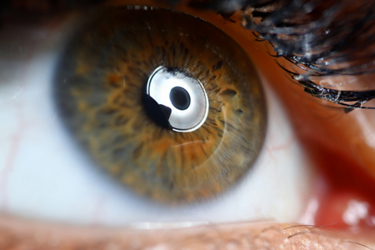How Atsena Got Its Gene Therapy To Spread Subretinally To Treat XLRS
A conversation with Sanford Boye, co-founder and adviser, Atsena Therapeutics.

Delivering AAV gene therapy to the retina to treat a rare inherited retinal disease is not without risk.
For one, using conventional gene therapy vectors to target genes to the central retina (the area where therapy is needed) requires detaching that region of the retina. Beyond that, transduction doesn’t happen much beyond the injection bleb, which can limit therapeutic effect. Atsena Therapeutics, a clinical-stage gene therapy company, is working to solve those problems for patients with X-linked retinoschisis (XLRS) using a novel capsid to deliver its ATSN-201 gene therapy product to the central retina without the need for detachment.
XLRS affects around 30,000 males in the United States and Europe, and it typically shows up during childhood and leads to blindness. It has no cure.
Atsena, a University of Florida spinout, received FDA approval to begin a Phase 1/2 trial in 2023 and recently was granted Orphan Drug designation and before that, Rare Pediatric Disease designation.
At the heart of its strategy, the novel capsid AAV.SPR or AAV44.9(E531D) can spread laterally, beyond the bounds of the injection site, to deliver therapeutic genes to more of the retina and in particular to those photoreceptors in the central retina, according Atsena.
We had questions about AAV.SPR and Atsena’s strategy to scale. Co-founder Sanford Boye, who currently serves as an adviser to the company offered to help. Here’s what he told us. Answers have been edited for clarity.
Other serotypes, AAV2 for example, have been used for retinal delivery. What led you to use the novel AAV.SPR capsid?
AAV2 is efficient at delivering genes to the retinal pigment epithelium (RPE) but not photoreceptors. Our approach for ATSN-201 is to target therapy to the photoreceptors of patients with XLRS as we think this is the tissue most important for expressing the therapeutic gene.
AAV.SPR is highly efficient at targeting photoreceptors and it has the added advantage of spreading laterally to areas outside of the bleb created by the subretinal injection.
Beyond that, does AAV.SPR offer any immunogenicity advantages over AAV2? In other words, how are you using the technology to enhance the safety and efficacy of ATSN-201?
I wouldn't necessarily characterize AAV2 as being intrinsically immunogenic; it simply takes more AAV2 virus to achieve suitable levels of therapeutic gene expression, and the greater dose of vector can lead to an adverse reaction by the retina. This is where the improved efficiency of AAV.SPR is important, as less vector is needed to get adequate therapeutic gene expression.
There is also the added benefit of the spreading ability of AAV.SPR. This enables treating a larger area of retina, including areas outside of the injection bleb that may be considered too fragile to receive direct subretinal injection, such as the central macula. It is important to point out that subretinal injection is required for efficient gene delivery to photoreceptors.
Prior clinical trials for XLRS incorporated intravitreal injection and failed due to the inability to efficiently target photoreceptors. While there are newer AAVs improved for intravitreal delivery, none have shown to be capable of achieving the levels of gene delivery mediated by subretinally delivered AAV.SPR.
As you scale up the manufacturing process for ATSN-201, what key challenges have you encountered or do you anticipate? How are you addressing them to ensure a consistent and reliable supply?
I think this question highlights one of the attractive features of orphan ophthalmology that goes unnoticed. Because we are treating a small organ, our dose is modest in comparison to other gene therapies. Couple that with a patient population that qualifies as an “orphan,” and you wind up needing relatively small total amounts of drug. In short, the scale of manufacturing is much less of an issue.
I think the key challenge is to maintain or improve product quality as we shift to GMP. This can be done by developing robust assays with which to assess product quality. This is something our CMC team focuses much of their attention on.
The FDA's Orphan Drug designation for ATSN-201 underscores the unmet need for XLRS. How does it accelerate your clinical development and regulatory strategy?
Orphan Drug designation doesn't directly accelerate development; it provides incentives (tax credits for clinical trials, exemptions from FDA user fees and an extended period of market exclusivity post approval) that make programs more attractive to investors, which can lead to more funding and acceleration of development.
There are other FDA regulatory designations, such as Regenerative Medicine Advanced Therapy (RMAT), that allow for more frequent and focused meetings with the FDA that more directly expedite development and greatly aid in refining the regulatory strategy. We recently secured RMAT for ATSN-101, our LCA1 program. There are a set of criteria that must be met for RMAT, and we anticipate that ATSN-201, like ATSN-101, will meet those.
How do you envision AAV.SPR technology affecting the future of gene therapy in ophthalmology?
I think AAV.SPR has the potential to be a platform technology for treating inherited retinal disease. The ability to target genes to a larger area of the retina in a manner that avoids detaching the central retina is game-changing.
 About The Expert:
About The Expert:
Sanford Boye cofounded Atsena Therapeutics and works as an associate director at the University of Florida's Powell Gene Therapy Center. He specializes in developing and producing viral vectors for ocular gene therapy. His work focuses on AAV vectors and manufacturing processes for treating inherited retinal diseases.
